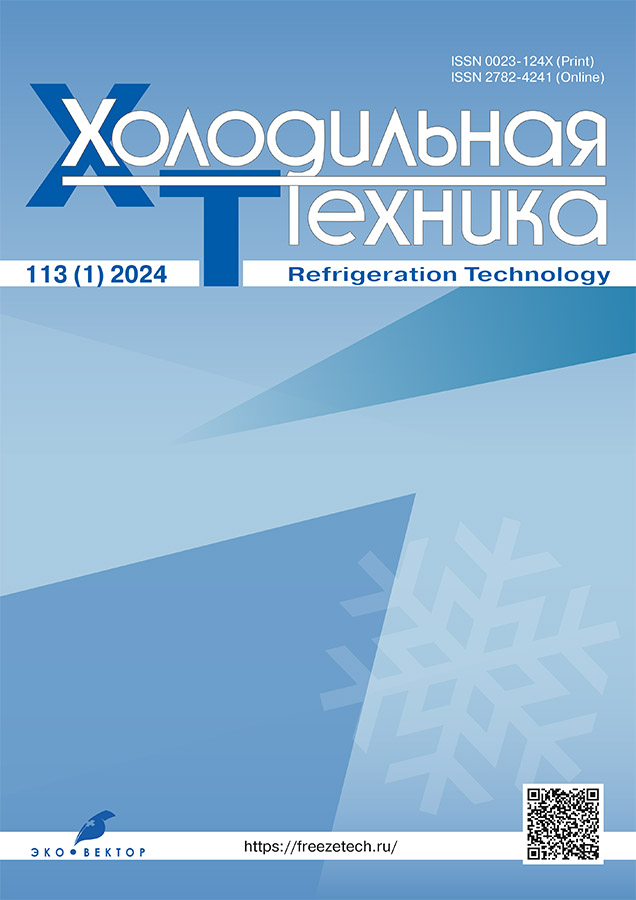The role of miscible PAG lubricants in ammonia refrigeration systems reduction and compactness
- Authors: Muñoz-Alonso M.1, Dixon L.1, Seeton C.2, Karnaz J.2
-
Affiliations:
- Shrieve Products International Ltd.
- Shrieve Chemical Products LLC.
- Issue: Vol 113, No 1 (2024)
- Pages: 21-30
- Section: Original Study Articles
- URL: https://freezetech.ru/0023-124X/article/view/635864
- DOI: https://doi.org/10.17816/RF635864
- ID: 635864
Cite item
Abstract
Today’s society is going through an expanding use of natural refrigerants, earlier present only in big industrial facilities. This has made necessary the charge reduction and compactness improvement of the equipment, to fit the safety measures and standards requirements.
The refrigerant charge and the complexity of an ammonia refrigeration system are mainly because of flooded evaporators use and the need for an efficient oil separation system, since conventional lubricants and ammonia are immiscible.
The use of ammonia miscible lubricants can address the oil separation problem. A Poly-Alkylene-Glycol
(PAG) can be designed and formulated to be miscible with ammonia, and the plant operated like a conventional halocarbon refrigerant one. The circulating lubricant will be recovered through the compressor suction port of the compressor. This will help in the operation of Direct Expansion (DX) evaporators, reducing to a testimonial size the oil separation circuit.
This article is a translation of the article by Muñoz-Alonso M, Dixon L, Seeton CJ, Karnaz J. The role of miscible PAG lubricants in ammonia refrigeration systems reduction and compactness. In: Proceedings of the 9th IIR Conference on the Ammonia and CO2 Refrigeration Technologies. Ohrid: IIF/IIR, 2021. DOI: 10.18462/iir.nh3-co2.2021.0018 Published with the permission of the copyright holder.
Keywords
Full Text
About the authors
M. Muñoz-Alonso
Shrieve Products International Ltd.
Author for correspondence.
Email: mmunoz@shrieve.com
United Kingdom, Kent
L. Dixon
Shrieve Products International Ltd.
Email: mmunoz@shrieve.com
United Kingdom, Kent
C.J. Seeton
Shrieve Chemical Products LLC.
Email: cseeton@shrieve.com
United States, Texas
J. Karnaz
Shrieve Chemical Products LLC.
Email: cseeton@shrieve.com
United States, Texas
References
- Lamb R. Low Charge Packaged Ammonia Refrigeration Systems. In: 7th IIR Conference: Ammonia and CO2 Refrigeration Technologies. Ohrid, 2017.
- Muñoz-Alonso M. The Role of the Lubricant Chemistry in a R-744 Refrigeration Plant. Oil Return and Lubricity. Comparison Between Two Chemistries Using Data from a Real Plant. In: 7th IIR Conference: Ammonia and CO2 Refrigeration Technologies. Ohrid, 2017.
- Stachowiak G. Batchelor A. Chapter 2. Physical Properties of Lubricants. In: Engineering Tribology. Butterworth Heinemann, 2000.
- ASHRAE Refrigeration Handbook. Chapter 12. ASHRAE, 2018.
- Seeton C.J., Karnaz J. Thermodynamic and Transport Properties of Lubricant and Refrigerant Mixtures. Oil Management in Compressors and Their Systems. Purdue University Short Course, 2016.
- Seeton C.J. Lubricant Roadmap to the Changing Refrigeration Market. Industry Day Presentation. In: 10th International Conference on Compressors and their Systems. City University of London, 2017.
- Shrieve Information Bulletin Zerol. Alkylbenzene Lubricants. Zerol. 350 with Ammonia PVT Chart. Shrieve Chemical Products, The Woodlands, TX, USA, 2014.
- Shrieve Information Bulletin. Solubility, Liquid Density, and Liquid Viscosity of Zerol PAG-R717 52 with Ammonia (R-717). Shrieve Chemical Products, The Woodlands, TX, USA, 2014.
- Seeton C.J. CO2-Lubricant Two-Phase Patterns in Small Horizontal Wetted Wall Channels; The Effects of Refrigerant/Lubricant Thermophysical Properties [dissertation] Illinois, 2009.
- Expósito J.A. A novel design of a very low ammonia chiller. In: CYTEF 2020. Congreso de Ciencias y Técnicas del Frío. Pamplona, 2020.
Supplementary files














